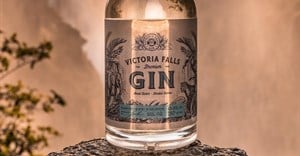
Subscribe & Follow
Jobs
- Customer Service (UK Company) Work from Home Work From Home
- Finance Manager Cape Town
The quiet rise of rum and dark spirits

It’s easy to see how this shift happened in beer because the category was so uniquely monopolised by megabrands which drinkers moved away from in favour of choosing interesting, unique craft beer.
Gin is offering a similar story. We’re shifting (sprinting might be a better word) from traditional choices to more interesting brands. Today’s gin drinkers are drawn to the tales behind the liquid, whimsical names (like Drumshanbo Irish Gunpowder Gin), the unquestionable quality of small-batch liquids, and the beautiful packaging of boutique brands.
Gin is no longer the brand that your granny fished out of her handbag for an afternoon nip… It’s the drink of choice for young, fashion-conscious drinkers and it’s showing no sign of slowing down.
While there are a huge number of male gin drinkers, the gin explosion has been a somewhat female story. The educated, opinionated, independent young woman of today makes her own decisions on what to drink and has a much wider repertoire than her mom or gran did: a glass of bubbly on arrival, G&T as a sundowner, wine with dinner, perhaps followed by a cocktail or two. She’s totally in control of her choices, and gin is one of the major benefiters.
But gin isn’t the only place we’re seeing this shift towards brands that are seen to be more interesting, original, authentic. It’s happening in dark spirits too, where increasing numbers of South Africans are moving to the dark side (sorry, couldn’t resist).
Evolution in dark spirits
Not to be outdone by the ladies, men are following suit and driving a quieter – but no less tectonic – evolution in dark spirits. It’s quieter largely because men have had control and greater choice in their drinks for longer – and categories like Single Malt have long catered to this. But in recent years we’ve seen the gradual emergence of other exciting brown spirit categories that are offering men more interesting choices.
In South Africa, men were typically raised to understand and enjoy brandy, and that gradually shifted to Scotch as SA opened up and the global economy came to our doorstep. Scotch was drunk in similar ways to brandy so it was a natural transition. But now, at the edges of the Scotch, brandy and Cognac drinkers, we are starting to see men exploring drinks that would’ve been considered unusual not even a year or two ago.
Take the curious and quirky Kraken Black Spiced Rum for example. A few decades back, it’s difficult to imagine a brand like Kraken appealing to people. In those days people ordered a premium brand because they knew it came from a 200-year old distillery somewhere in Scotland. Age and heritage were used to communicate high quality, a drink that was unchanged for generations and, ultimately, a premium price point.
Desire for storytelling
Nowadays, quality is taken for granted and we want something more. Labelling a drink as ‘premium’ today comes with a massive responsibility to entertain people; to tell curious stories that raise a smile and a knowing nod from drinkers. These brands live in the world of story-telling in a bar or having fun with friends and they’re required to have dimension and entertainment appeal. They must be captivating and pique curiosity.

Covering cities in billboards is no longer enough. Rather, brands must tell their own stories in their own way. Marketing these brands is as laborious as the hand-crafted, small-batch way in which they’re produced: the approach must be one-on-one, it takes time and it’s centred on captivating people with the story behind the drink. But when they connect with people, they leave an impact and you can’t help telling others about your find.
It also means that the story must be on the bottle: you should be able to look at it and immediately understand the myth that it’s having fun with. Kraken Black Spiced Rum’s packaging alone transports you to a fun place and tells its story: dredged from the blackest depths of the unrelenting north Atlantic and said to have been touched by the notorious sea beast of myth and legend, The Kraken.
Super-premium segment
At the top end of the spectrum, super-premium rum releases are successful because they offer drinkers alternatives to traditional luxury spirits at much more accessible prices.
Impressed by South African market’s potential on a recent trade visit, niche producers Bleeding Heart Rum, will soon launch Don Papa Sherry Cask, appealing to the premium nature of the liquid, as well as it’s age and provenance. This is a Rum made in the jungles of the Philippines, named after a national freedom fighter (who I’m guessing liked a drink or two) – another irresistible story clearly told by the rum’s packaging design.
According to the International Wine and Spirits Report (IWSR) data over the last 5 years, super-premium and above rum has grown by 17% compound growth since 2013 to over 1.1 million 9-litre cases. South Africa is the fastest-growing market globally within this super-premium segment, with compound growth of 146% per year. No surprises there, we like a good drink as much as the next nation.

















